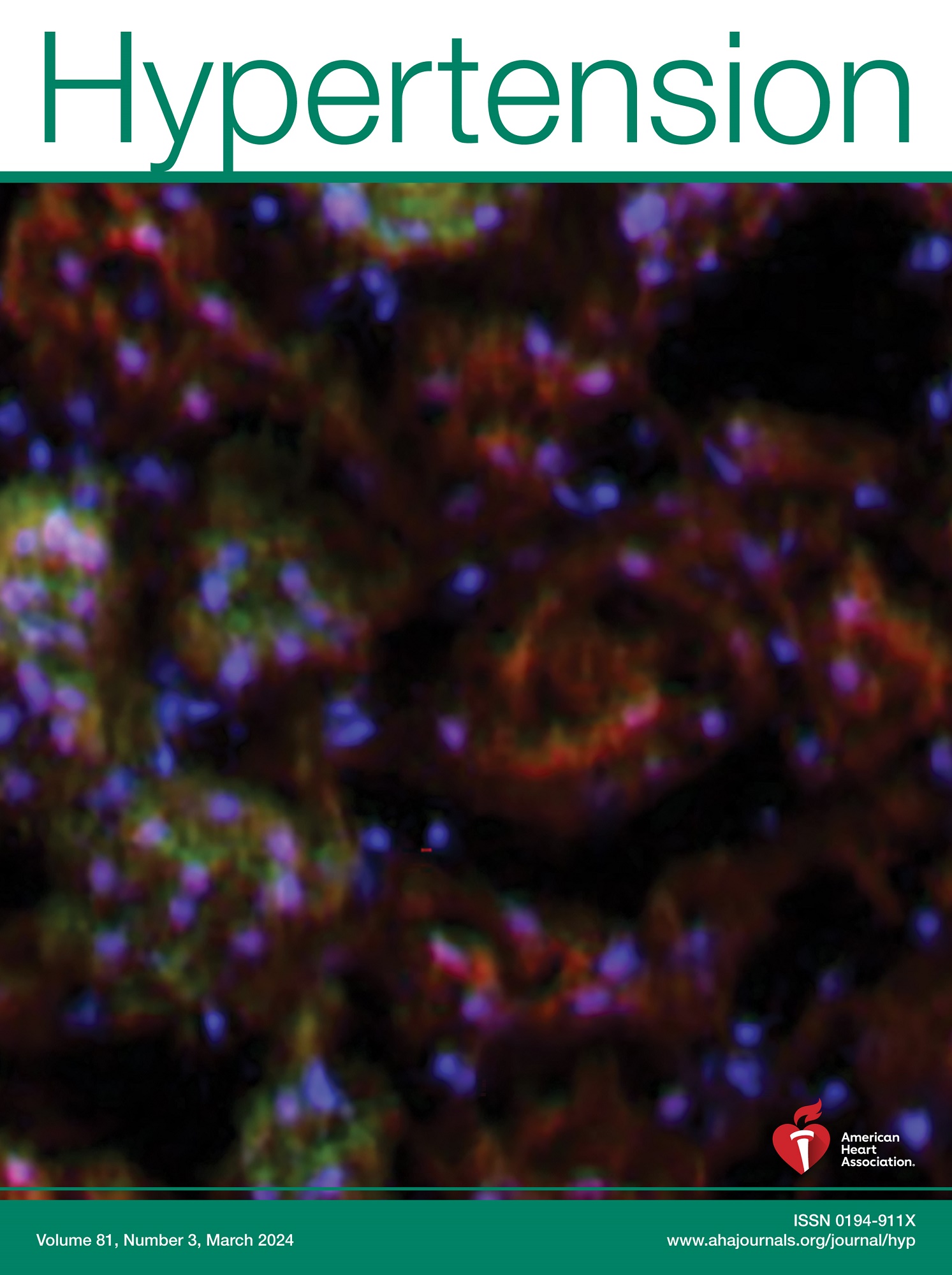Renal TRPM3 Channels Regulate Blood Pressure via Tubuloglomerular Feedback and Plasma Volume Control.
IF 8.2
1区 医学
Q1 PERIPHERAL VASCULAR DISEASE
引用次数: 0
Abstract
BACKGROUND TRPM3 is a nonselective cation channel activated by heat, osmotic pressure, and neurosteroids. It is highly expressed in sensory neurons, where it integrates thermal, chemical, and inflammatory signals to modulate downstream responses, but is also present in the brain, kidney, and cardiovascular system. This distribution suggests a role in cardiovascular and renal regulation. We hypothesize that TRPM3 channels may play a role in blood pressure (BP) regulation via both vascular and renal mechanisms. Therefore, analysis of the vascular phenotype in Trpm3-KO mice can provide insights into the channel's potential contribution to hypertension development. METHODS BP was monitored noninvasively in conscious wild-type and Trpm3-KO mice under basal conditions and after oral losartan treatment or angiotensin II infusion via osmotic minipumps. TRPM3 expression in vessels and kidney structures was examined using immunofluorescence microscopy and RNAscope with specific cell markers. Ex vivo renal perfusion and pressure myography were used to evaluate vascular responses. RESULTS Trpm3-KO mice showed a ≈5% BP reduction and resistance to angiotensin II-induced hypertension. Urine [Na⁺] was 35% to 50% higher, and plasma volume was 20% lower, suggesting a renal origin of the hypotension. TRPM3 was localized at the juxtaglomerular apparatus and distal nephron segments involved in plasma volume regulation. Trpm3-KO mice exhibited impaired tubuloglomerular feedback, reducing afferent arteriole constriction and NaCl reabsorption. CONCLUSIONS TRPM3 channels contribute to BP regulation by modulating kidney function. Blunted tubuloglomerular feedback in Trpm3-KO mice disrupts NaCl reabsorption, leading to hypovolemia and lower BP. Thus, renal TRPM3 channels may serve as promising targets for BP regulation.肾TRPM3通道通过小管肾小球反馈和血浆容量控制调节血压。
背景:trpm3是一种非选择性阳离子通道,可被热、渗透压和神经甾体激活。它在感觉神经元中高度表达,在那里它整合热、化学和炎症信号来调节下游反应,但也存在于大脑、肾脏和心血管系统中。这种分布表明它在心血管和肾脏调节中起作用。我们假设TRPM3通道可能通过血管和肾脏机制在血压调节中发挥作用。因此,分析Trpm3-KO小鼠的血管表型可以深入了解该通道对高血压发展的潜在贡献。方法对清醒野生型小鼠和Trpm3-KO小鼠在基础条件下、口服氯沙坦或通过渗透微型泵输注血管紧张素II后的舒张压进行无创监测。利用免疫荧光显微镜和RNAscope检测血管和肾脏结构中TRPM3的表达。体外肾灌注和压力肌图评估血管反应。结果strpm3 - ko小鼠血压降低约5%,对血管紧张素ii诱导的高血压有抵抗性。尿[Na +]升高35% - 50%,血浆容量降低20%,提示低血压由肾脏引起。TRPM3定位于参与血浆体积调节的肾小球旁器和远端肾元段。Trpm3-KO小鼠表现出小管肾小球反馈受损,传入小动脉收缩和NaCl重吸收减少。结论strpm3通道通过调节肾功能参与血压调节。Trpm3-KO小鼠的钝化小管肾小球反馈破坏了NaCl的再吸收,导致低血容量和低血压。因此,肾脏TRPM3通道可能是血压调节的有希望的靶点。
本文章由计算机程序翻译,如有差异,请以英文原文为准。
求助全文
约1分钟内获得全文
求助全文
来源期刊

Hypertension
医学-外周血管病
CiteScore
15.90
自引率
4.80%
发文量
1006
审稿时长
1 months
期刊介绍:
Hypertension presents top-tier articles on high blood pressure in each monthly release. These articles delve into basic science, clinical treatment, and prevention of hypertension and associated cardiovascular, metabolic, and renal conditions. Renowned for their lasting significance, these papers contribute to advancing our understanding and management of hypertension-related issues.
 求助内容:
求助内容: 应助结果提醒方式:
应助结果提醒方式:


